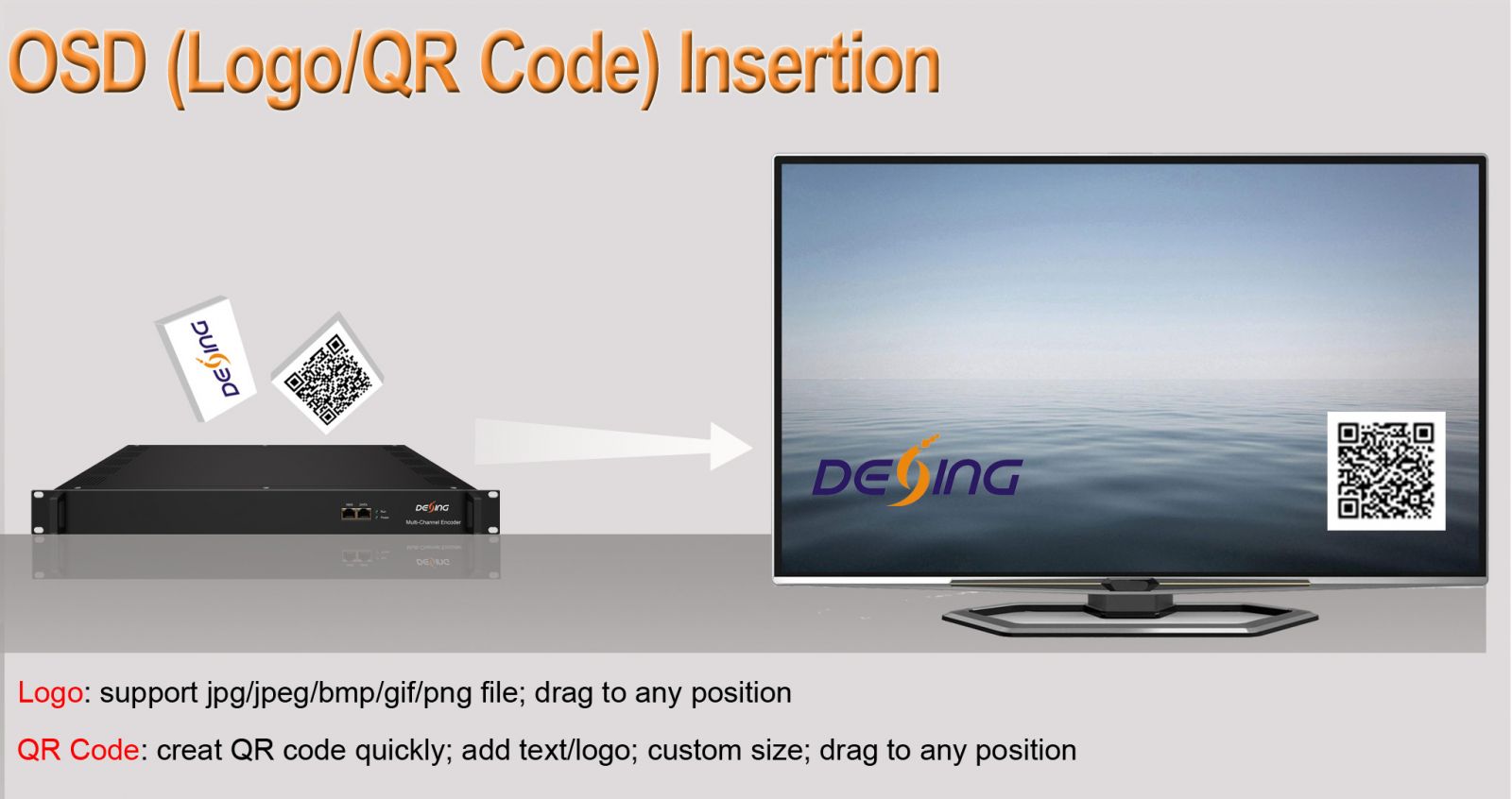Contact Us
 yingyingbai131
yingyingbai131 info@dsdvb.com
info@dsdvb.com 86-28-85550524
86-28-85550524
Principle Chart of Per Module
(The number of encoding channels depends on encoding format and resolution)
Technical Specification
|
4/8/12 HDMI inputs for option, HDCP 1.4 |
|||||
|
Video Encoding |
Encoding Format |
HEVC/ H.265 , MPEG 4 AVC/H.264 |
|||
|
Resolution |
Input |
Output |
|||
|
HEVC/H.265 |
MPEG-4 AVC/H.264 |
||||
|
4*1080P-50 |
4*1080P-50 |
2*1080P-50 |
|||
|
4*1080P-60 |
4*1080P-60, |
2*1080P-60 |
|||
|
4*1080I-50 |
4*1080P-50 |
4*1080I-50 2*1080P-50 |
|||
|
4*1080I-60 |
4*1080P-60 |
4*1080I-60 2*1080P-60 |
|||
|
4*720P-50 |
4*720P-50 |
4*720P-50 |
|||
|
4*720P-60 |
4*720P-60 |
4*720P-60 |
|||
|
Chroma |
4:2:0 |
||||
|
Bitrate |
0.5Mbps~20Mbps(each channel) |
||||
|
Rate Control |
CBR/VBR |
||||
|
GOP Structure |
IBBP, IPPP |
||||
|
Advanced Pretreatment |
De-interlacing, Noise Reduction, Sharpening |
||||
|
Audio Encoding |
Encoding Format |
MPEG-1 Layer 2, LC-AAC, HE-AAC, HE-AAC V2, AC3 Pass-through |
|||
|
Sampling rate |
48KHz |
||||
|
Bit-rate (each channel) |
48Kbps~384Kbps (MPEG-1 Layer 2& LC-AAC) 24 Kbps~128 Kbps (HE-AAC) 18 Kbps~56 Kbps (HE-AAC V2) |
||||
|
Audio Gain |
0~255 |
||||
|
Stream output |
IP (4 SPTS) output over SRT, RTP, RTSP, RTMP, HTTP, HLS per module, 1000M/100M Base-T Ethernet interface (unicast/multicast); IPv4, IPv6 output IP null packet filter |
||||
|
System |
Web based management |
||||
|
Chinese-English control interface |
|||||
|
Ethernet software upgrade |
|||||
|
Miscellaneous |
Dimension (W× L× H) |
482mm×328mm×44mm |
|||
|
Approx weight |
5kg |
||||
|
Temperature |
0~45℃(work), -20~80℃(Storage) |
||||
|
Power |
AC 100V-220V±10%, 50/60Hz |
||||
Dexin HEVC/H.265 encoder’s advantages
1. Providing smooth TS for modulators
Dexin HEVC/H.265 encoder adopts Fujitsu chip which offers stable bitrate with lower fluctuation compared with other encoding chips, so it provides smooth TS for modulators. Itis widely used in variety of digital distribution systems such as CATV digital head-end, satellite and terrestrial digital TV, etc.
2. Encoding with highest compression format—B frame (IBBP)
What is B Frame?
Thereare 3 major picture types used in the different video algorithms, they are I, P and B.
They are different in the following characteristics:
I‑frames are the least compressible but don't require other video frames to decode.
P‑frames can use data from previous frames to decompress and are more compressible than I‑frames.
B‑frames can use both previous and forward frames for data reference to get the highest amount of data compression.
|
Byte of data/KB |
Compression Ratio |
|
|
I |
18 |
7:1 |
|
P |
6 |
20:1 |
|
B |
2.5 |
50:1 |
In one word, B frame is the highest compression format which makes it possible to process HD video at low bitrate. HEVC/H.265 encoder is not able to save bandwidth unless it is with B frame.In encoder parameters, B frame is often describedin GOP (Group of Pictures) structure, like “IBBP”.







